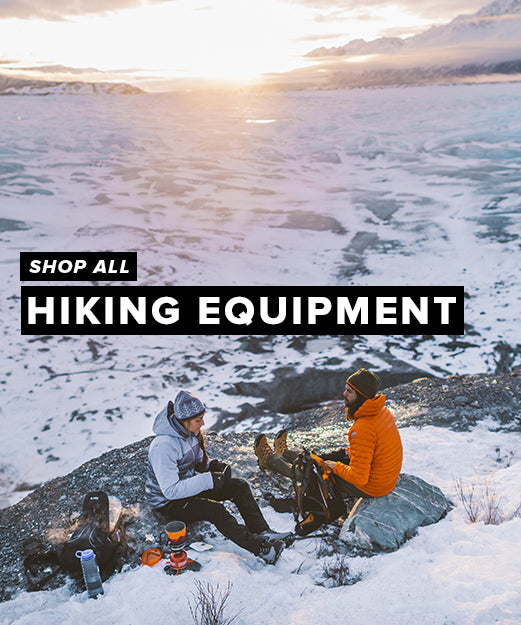
Don't catch your death!
In the UK, the popular belief is that hypothermia just affects the old, the very young, and polar adventurers – so if you're an ageing ice-trekker, your fate is sealed. Whilst media reports adopt a similar tack, the reality is that deaths from hypothermia occur throughout the population, throughout the year. For example, during the comparatively warm and dry summers of 2008-2010, hypothermia caused 132 UK deaths over the holiday months.
Hikers and campers are identified as an 'at risk' group, with many outdoor adventurers ill-prepared for fluctuating weather conditions in the British Isles, and often making do with inappropriate clothing. Disconcertingly, a good number are also blissfully unaware of cotton's reputation as an 'outdoor killer'. So, in the interests of personal safety, let's review some of the reasons why outdoor professionals consider cotton to be a high-mortality fabric.
Fair weather friend
Cotton has a 'Jekyll and Hyde' reputation in the world of outdoor clothing. If you want to stay cool and enjoy the weather on a hot dry summers' day, a loose and lightweight cotton shirt and trousers seems like the best outfit ever invented. However, once cotton garments gets wet, a more sinister scenario can develop.
Here's the fatal flaw with cotton: it's hydrophilic. Though it is a good insulator offering supreme breathability, cotton – just like wool – absorbs vast amounts of water as its tiny air pockets quickly become saturated. This sponging effect increases the weight of some cotton clothing up to 27 times; worst of all, it traps a nasty reservoir of water right next to your skin. This is serious because cotton – unlike wool – now loses its ability to insulate, and begins instead to drain heat from your body.
Once this deadly heat-exchange begins, it is estimated wet cotton sucks your body heat away at least 25 times faster than dry clothing. From this point on, inexperienced hikers are flirting with hypothermia.
More cotton snags
As cotton becomes water-soaked, it loses its soft fluffy feel, transforming instead into a tough abrasive material. As a result, cotton-rash develops at pressure points quickly leading to blisters and packsores, for example, or – with cotton underwear – to severe chafing which is debilitating and highly unpleasant.
Whilst the fact that cotton rapidly traps the rain and mist common in British hills and upland areas is easy to observe and appreciate, what is too-easily overlooked is that cotton also collects moisture within clothing base layers.
Hiking exertion naturally causes perspiration which soaks into the cotton layer next to your skin. With modern fabrics designed for outdoor use, there is a 'wicking' effect which draws such moisture away from the skin and outwards through further layers by capillary action, leaving your skin dry. Cotton lacks this wicking ability, and thus, even when wearing a waterproof outer shell, wets you unseen from the inside out.
Does anyone love cotton?
All outdoor groups and agencies highlight the dangers of cotton for hikers and backpackers, and most experienced outdoor trekkers believe cotton is only suitable for hiking up and down the catwalk. Exceptionally, cotton does find favour with 'desert rats', those whose speciality is tramping across the world's arid regions. Here, cotton's ability to soak up body sweat is exploited: in extreme heat, a soaking-wet shirt keeps the body cooler as this moisture slowly evaporates under the hot sun. Others, however, feel that wearing sticky, clammy wet-cotton all day is too high a price to pay for this benefit, and wear synthetics instead.
Hypothermia basics
Known as the 'creeping death', hypothermia is disorientating and victims are rarely aware of its onset. Immersion hypothermia is considered the greatest danger and can occur outdoors in an instant – when a hiker slips into a stream, for example. Coping with a case of hypothermia in a remote outdoor location is a major challenge, and death can occur if untreated; so recognising early symptoms is vital.
Referring to hypothermia's early-warning signs, one writer advises companions to look out for telltale 'umbles' when a suspected victim:
- Tumbles
- Stumbles
- Fumbles
- Mumbles
- Grumbles -
Several 'umbles' occur together strongly suggest hypothermia. Shivering is also a sign, but beware concluding a lack of shivering is good news. As hypothermia gains a grip, so the victim, whose body heat and energy is draining away, becomes unable to shiver. Severe cases where the victim is ice-cold, and all vital signs seem to have disappeared, can still be saved by modern medical treatments. In such cases, fast transfer to a hospital with advanced facilities is absolutely essential.
Hypothermia prevention
- Reduce heat loss by investing in appropriate good-quality outdoor clothes. Modern fabrics are ultra-comfortable, waterproof and breathable, and dry quicker than natural fibre fabrics.
- Always stay dry, and carry dry clothes for emergencies if you should become wet;
- Be aware hypothermia can occur in wet and windy weather conditions, well above freezing;
- Recognise that, even in dry weather, hikers rarely stay dry for long;
- Look out for your companions to spot early warning signs.
 NEW!! Free UK Delivery
NEW!! Free UK Delivery Hassle-Free Returns
Hassle-Free Returns Clearpay
Clearpay









